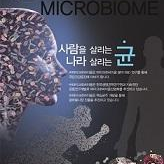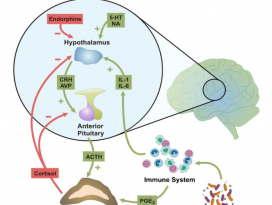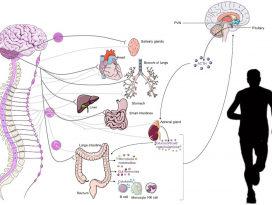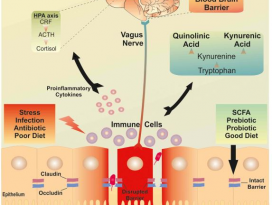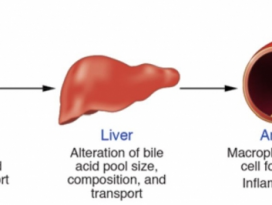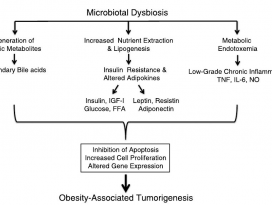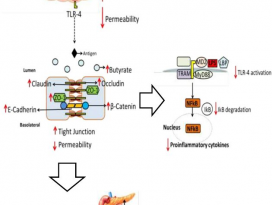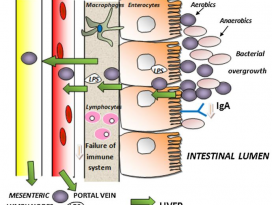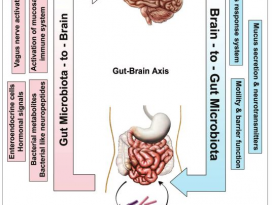[Gut Microbiome] Association Between Gut Microbiota and Helicobacter pylori-Related Gastric Lesions in a High-Risk Population of Gastric Cancer
- e 1312
AssociationBetween Gut Microbiota and Helicobacter pylori-Related Gastric Lesions in aHigh-Risk Population of Gastric Cancer
Juan-Juan Gao,Yang Zhang, Markus Gerhard, Raquel Mejias-Luque, Lian Zhang, Michael Vieth,Jun-Ling Ma, Monther Bajbouj, Stepan Suchanek, Wei-Dong Liu, Kurt Ulm, MichaelQuante, Zhe-Xuan Li, Tong Zhou, Roland Schmid, Meinhard Classen, Wen-Qing Li,Wei-Cheng You and Kai-Feng Pan
Key Laboratory ofCarcinogenesis and Translational Research (Ministry of Education), Departmentof Cancer Epidemiology, Peking University Cancer Hospital and Institute,Beijing, China, Institute of Medical Microbiology, Immunology and Hygiene,Technische Universität München, Munich, Germany, German Center for InfectionResearch, Partner Site Munich, Munich, Germany, Institute of Pathology,Klinikum Bayreuth, Bayreuth, Germany, II. Medizinische Klinik, Klinikum Rechtsder Isar, Technische Universität München, Munich, Germany, Department ofInternal Medicine, 1st Faculty of Medicine, Charles University, MilitaryUniversity Hospital, Prague, Czechia, Linqu Public Health Bureau, Linqu,Shandong, China, International Digestive Cancer Alliance, Munich, Germany
제목
위암 고위험군 내 장내 미생물과 헬리코박터 파일로리(Helicobacter pylori) 관련 위 병변의 연관성
내용
헬리코박터 파일로리(Helicobacter pylori, H. pylori)의 박멸은 위암 예방에 효과적이라는 것이 밝혀졌지만, 장내 미생물의 잠재적 불균형 등 발생 가능한 역효과에 대해서는 여전히 불확실성이 남아있다. 본 연구에서는 분변을 이용해 미생물 16S rRNA 유전자 심층시퀀싱 분석을 하여 47명의 피험자의 장내 미생물과 H. pylori 관련 위 병변의 연관성을조사하였다. 박테로이데테스(Bacteroidetes), 퍼미쿠테스(Firmicutes) 및 프로테오박테리아(Proteobacteria) 문(phyla)이 분변에서 지배적으로 나타났으며, 평균적으로 각각 54.77%, 31.37%, 12.91%의 수치로 상대적으로 높았다. 미생물다양성 분석 결과, 과거에 H. pylori 감염 경험이 있거나 현재 감염 상태인 피험자가음성 판정 피험자와 비교하여 관찰된 종과 Shannon 지수 (ShannonIndex; 생물다양성 지수 중 한 지표)가 증가한 것으로 나타났다. 이종균(differential bacteria)의 경우 박테로이데테스의평균 상대적 존재량(average relative abundance)은 정상 (76.49 %)에 비해 위염 (56.04 %) 및 표생성 과목 (46.83 %, p = 0.027)에서 유의하게 감소하였을 뿐만 아니라 H. pylori 음성 그룹 (66.16 %)에 비해 과거 감염 이력 그룹 (33.01 %, p = 0.007)에서도 유의하게 감소함을 보였다. 퍼미쿠테스와프로테오박테리아의 평균 상대적 존재량은 과거 H. pylori 감염 그룹(47.11, 20.53 %)이 음성 그룹 (23.44, 9.05 %, p = 0.068,0.246)에 비해 증가한 경향을 보였으며, 정상(18.23, 5.05 %)에 비해 위염 (35.31, 7.23 %, 각각 p = 0.016, 0.294) 또는 변질 (metaplasia) 피험자(32.33, 20.07 %, 모두 p<0.05)에서도비슷한 증가 추세가 나타났다. 이러한 결과는 분변 미생물의 변화, 특히지배적인 박테로이데테스, 퍼미쿠테스 및 프로테오박테리아 문이 H. pylori 관련 위 병변의 진행과정에 관여할 수 있으며, H. pylori박멸 후의 미생물 변화에 대한 향후 평가를 위해 단서를 제공할 수 있음을 시사한다.
Keyword
: #Helicobacterpylori #H.pylori #H.pyloriInfection#GastricLesions #GastricCancer #Gastritis #MicrobialDiversity #16SrRNAGeneSequencing#Probiotics #Microbiome #Microorganisms #Microbes #Microbiota#GutMicrobiome #GutMicrobiota #MicrobialDysbiosis #
#헬리코박터파일로리 #H.파일로리 #H.파일로리감염 #헬리코박터감염 #위병변 #위암 #d위염 #미생물다양성 #프로바이오틱스 #유익균 #마이크로바이옴 #미생물총 #미생물군 #미생물유전자 #장내미생물 #장내미생물총 #장내미생물군 #장내미생물불균형
[출처: Gao, J.,Zhang, Y., Gerhard, M., Mejías Luque, R., Zhang, L., Vieth, M., ... & Ulm,K. (2018). Association between gut microbiota and Helicobacter pylori-relatedgastric lesions in a high-risk population of gastric cancer. Frontiers in cellular andinfection microbiology, 8, 202]
|
| ㈜마이크로바이옴 ㈜마이크로바이옴은 생명공학 최고의 기술력을 바탕으로 마이크로바이옴 산업의 성장과 발전의 선도적 역할을 하고 있는 대한민국 대표 마이크로바이옴 R&D 전문 기업입니다. ㈜마이크로바이옴은 생명공학 국가연구기관인 한국생명공학연구원과 마이크로바이옴 관련 상품에 대하여 공동연구개발 및 기술이전을 통하여 공동특허 출원과 마이크로바이옴 상품화에 성공하였고, 마이크로바이옴 글로벌 기업이 되기 위하여 연구개발을 지속하고 있습니다. |
| no. | 제목 | 조회수 |
|---|
㈜마이크로바이옴 ㅣ 서울시 서대문구 연희로 77-12 영화빌딩2층
Tel :02-322-0302 l Fax : 02-322-0759
Copyright (c) Microbiome. Co. All Rights Reserved.

